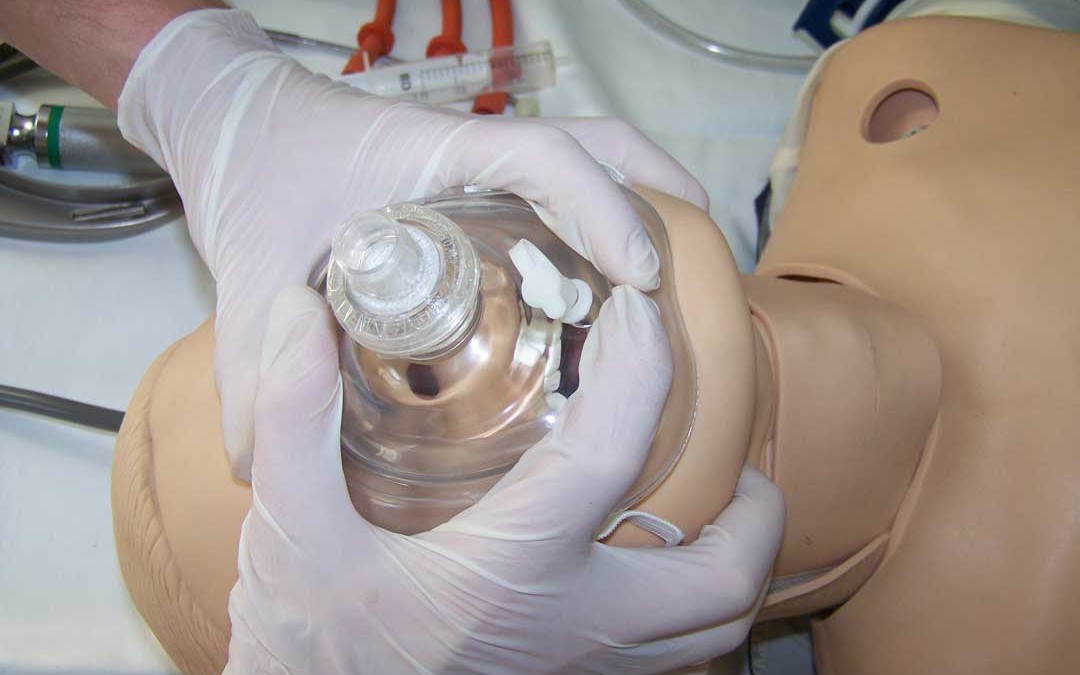A pocket mask is an aid that we use during resuscitation in cardiopulmonary resuscitation if equipment for advanced airway maintenance is not available. It is ideal when used by people who are not medical professionals, i.e. lay people. The mask is transparent to allow visibility of possible vomit and blood. It can have an additional port through which oxygen can be connected to increase the concentration of oxygen delivered to the patient.
In the event that the mask does not have an additional oxygen connection, the person providing assistance can place a nasal tube to increase the oxygen concentration, or place a tube under the mask, but care must be taken to ensure that the mask fits the patient well.
The recommended technique is to use both hands to hold the mask firmly with the thumbs and forefingers, and lift the lower jaw with the other fingers to open the airway. It is best to be above the patient’s head during this technique.
If a cervical spine injury is suspected, do not throw your head and neck back, but maintain a neutral position.
Open the oxygen bottle and connect it to the mask or place the probe under the mask.
During inhalation, maintain an open airway to prevent distension of the stomach, which may lead to vomiting. Excessive inflation pressure can also cause stomach bloating. Due to the distension of the stomach, the risk of regurgitation of stomach contents and aspiration into the lungs increases. During cardiopulmonary resuscitation with an unprotected airway, deliver two proper breaths through the mask after each set of 30 compressions.



0 Comments